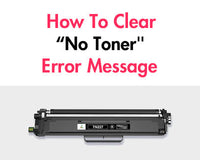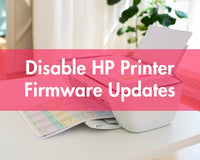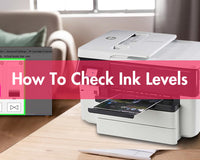In work and daily life, print plays an important role. From personalized cards to tickets, from water bills to product labels, print is everywhere to be seen. When you enjoy the convenience it brings, will you have many questions about it? Will the printer go wrong? Who will correct the printing if there is something wrong with the printed paper? How relevant are people to correcting the printing? Today I will reveal the secrets behind. During the whole printing process, the relevant team will be there to ensure print quality. They will ensure the accuracy of content, color, image, layout, and more. This complicated process is print assessment. It avoids huge losses and waste caused by errors. If you are running a company or need to print lots of brochures, you will be interested in this process. Then let me tell you what the print assessment is and why we should use it.
This article is indexed as follows:
What Is Print Assessment?
Print assessment is a technical process to check and assess print quality systematically. Through this process, the accuracy of content, color, image, layout, folding, and binding will be ensured to meet expectations. In simple words, print assessment is like giving a patient a physical exam. Printing assessment can prevent, detect, and correct errors through pre-press assessment, in-press quality control, and post-press check. Print assessment is an integral part of high-quality print.
How Does Print Assessment Work?
This is a complicated and rigorous process. The assessors need to pay attention to lots of details during the whole printing process. In every link, there will be a standard quality control checklist and dedicated staff. The staff need to fill in the checklist and record all statuses. This record form is the basis for quality tracking, customer communication, and internal improvement. If the print assessment team discovers a problem, they must take immediate action to solve it. Then let me tell you what they will do step by step:

Pre-press Assessment
Prepress Assessment is the first key quality control in the entire printing process. The team needs to discover and correct potential problems before formal printing. They will check many aspects like design files, printing parameters, equipment status, and more. This process can avoid waste and loss.
1. Check the File Contents
The print assessment team first needs to check the content of the file and correct wrong information. After this, they will check whether the format of the file is correct. The formats suitable for printing are PDF/X, AI, EPS, and so on. They also need to avoid missing words, missing images, and wrong layer merging.
2. Check the Color Settings and the Resolution
The print assessment team needs to set the color mode to CMYK or match the required spot color (such as Pantone). They also need to check the resolution. Suitable resolution will give a clearer image, more accurate color, and sharper text edges.
3. Check the Trim Area
Printed papers must reserve enough space to avoid white edges when trimming. To ensure accurate cutting, designers usually add auxiliary marks such as trimming lines and fold lines. The print assessment team needs to check if the trim area meets printing requirements. If it is wrong, some important content may be cut off.
4. Check the Printing Parameters
The print assessment team will confirm all parameters with the customer and the relevant department. The parameters include printer model, page material, print number, page number, single-sided or double-sided, inking method, binding method, and more.
In-press Quality Control
During the printing, the print assessment team needs to monitor and spot-check the print quality. Once there is something wrong with the prints, the team will stop production and correct them. In this way, the whole batch of prints will have uniform high quality. Also, it can avoid scrapping the entire batch caused by errors.
1. Proof Check
Before mass production, workers would produce some printing samples. The customers or the print assessment team will compare samples with the original design file. In this way, they will confirm whether the color, text, and layout are accurate. If the sample passes the test, then workers will start mass production.
2. Color Control and Density Check
In this process, the print assessment team pays attention to colors. Colors must remain stable throughout the print - no visible color shift, flicker, or inconsistent brightness. The team will set up a color standard, check color density regularly, check gray balance, and adjust ink volume or speed. In these ways, the team will ensure consistent and accurate color reproduction.
3. Registration Check
In multi-color printing, the colors must be printed precisely in the right position to prevent ghosting and misalignment. The print assessment team needs to check whether the control lines, cross lines, and micro registration marks are completely overlapped. If there is a deviation, the team needs to fine-tune the layout, paper direction, and pressure settings.
4. Text and Image Check
In this process, the print assessment team needs to avoid blurred text, missing images, and broken paper. They will randomly sample some papers and magnify details. They pay attention to many aspects. Are the text edges sharp? Are text strokes smooth with breaks? Are the images clear? Are QC codes scanned and readable? Everywhere must be qualified!
5. Equipment Status Check
At the same time, the print assessment team needs to monitor printer status. If there is something wrong with the printers, they will stop production right away. They need to observe whether the paper is running smoothly and whether there is any paper jam. Or check whether the paper is warped or stretched due to humidity problems. In addition, the marks and stains are also not allowed. They also need to have a look at the printhead to avoid uneven ink droplets.
Post-press Check
1. Trim Size and Cutting Check
In this process, the size of printed items must meet the customer's requirements. The print assessment team will use professional rulers or size calipers to measure printed items. There can't be excess burrs, uneven cutting edges, misalignment, and other problems. For unqualified printed items, workers will reproduce or recut them.
2. Paper Quality and Print Quality Check
In this process, the quality of paper must meet the customer's requirements. There are many inspection items, such as page quality, thickness, texture, color, and more. The print assessment team also needs to focus on paper defects like creases, stains, peeling, and so on. In addition, the ink drying degree is a key inspection item. Because if the ink is not dry enough, then the paper may stick together, and the text may be erased.
3. Folding and Binding Check
In this process, the binding process must meet specifications. For printed items with folded pages or multi-page binding, it is necessary to ensure that the folding lines of each layer of paper are consistent. In terms of binding, the binding lines, glue, or metal nails must be firmly fixed. If not, the booklet may lose or fall off easily. The print assessment team also needs to check whether the order of each paper is correct.
4. Random Sampling and Defective Item Handling
In this process, the print assessment team needs to randomly select a certain number of samples and conduct a comprehensive inspection. Inspection items include content, image, size, cutting accuracy, color, paper quality, folding and binding, and more. When the team finds defective printed items, they will deal with them promptly. They will mark defective items and record the status. After that, they will provide feedback to the design department, data processing department, or the production department according to specific issues. Then these defective items will be repaired or reworked.
Why Is Print Assessment Important?
1. Ensure Consistent Quality
Print assessment will inspect all relevant aspects of printed items like content, layout, format, folding, binding, and more. In every link, there will be a standard quality control checklist and dedicated staff. With such rigorous steps, the printed items of the same batch will consistently maintain high quality.
2. Discover Errors and Avoid Waste
Print assessment includes pre-press assessment, in-press quality control, and post-press check. If the team finds a problem at any stage, they will stop printing and take immediate action. In this way, the print assessment team will avoid scrapping entire batches and reduce cost waste.
3. Meet Client Expectations and Improve Customer Trust
Poor quality print can be costly. Not only money, time, and energy, but also damage to corporate image. If your customer receives brochures with misspellings, they will lose trust in your company. This is reasonable. A careless company is often considered untrustworthy. A stain on the corporate image will bring huge loss. Perhaps the company will lose many collaboration opportunities because of such small errors.
4. Cooperate with Environmental Protection and Cost Control Goals
Print assessment will reduce paper and ink waste caused by printing errors. It can also save machine startup time and energy. Print assessment is an important part of achieving green printing and low-carbon production.
Conclusion
Print assessment is more than just quality control; it’s a commitment to excellence. Printing assessment can prevent, detect, and correct errors through pre-press assessment, in-press quality control, and post-press check. It not only ensures the same batch of printer items has consistent high quality, but also avoids waste and big losses. If you are running a company or need to print a batch of brochures, why not give it a try? Maybe printing the assessment will bring you a surprise.












